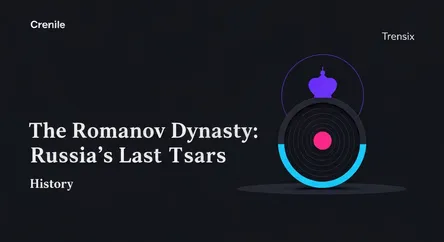History
The Romanov Dynasty: Russia's Last Tsars

Explore the rise and dramatic fall of the House of Romanov, the last imperial dynasty that ruled Russia for over 300 years until their execution.
What is it?
The House of Romanov was the second and final imperial dynasty of Russia, reigning from 1613 to 1917. For over three centuries, its sovereigns, including figures like Peter the Great and Catherine the Great, oversaw the expansion of Russia into a vast and powerful empire. The dynasty's long rule concluded during the turmoil of World War I with the abdication of Tsar Nicholas II following the February Revolution. The family's tragic end came in 1918 when Bolshevik revolutionaries executed Nicholas II, his wife, and their five children.
Why is it trending?
The Romanov story remains a topic of intense public fascination due to its blend of opulence, mystery, and tragedy. The brutal execution of the last imperial family, especially the children, continues to captivate and horrify audiences. For decades, legends persisted that some members, particularly Grand Duchess Anastasia, might have survived, fueling countless books and films. The historical drama, involving the controversial mystic Rasputin and the collapse of an empire, ensures the Romanovs are a recurring subject in popular culture, history documentaries, and academic research.
How does it affect people?
The Romanov dynasty's legacy is integral to understanding modern history. Their 300-year reign fundamentally shaped the political and geographical boundaries of modern Russia. The collapse of their rule was a pivotal moment that led directly to the Bolshevik Revolution and the creation of the Soviet Union, a communist state whose existence defined the geopolitics of the 20th century. The tale of their downfall serves as a powerful historical lesson on the impacts of autocratic rule, societal unrest, and the forces of revolution that continue to resonate globally.